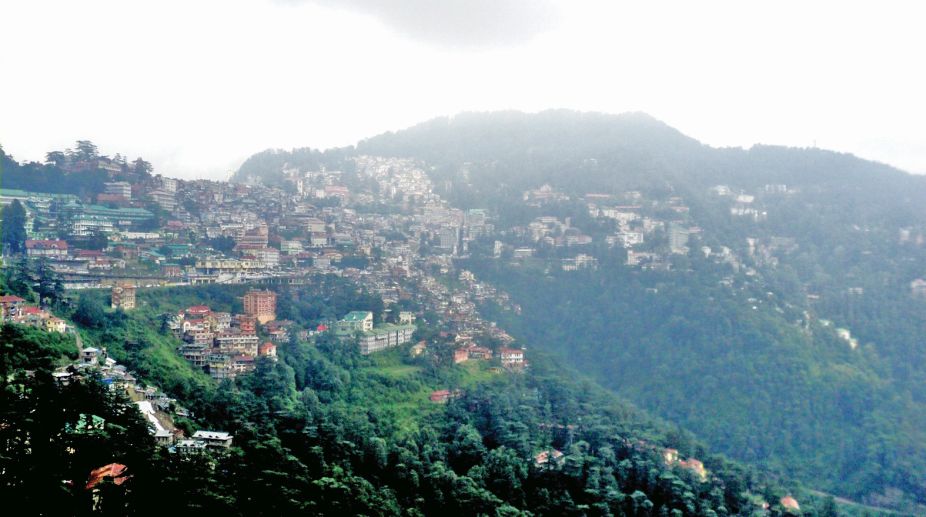An awakening of sorts, in the form of a movement, is gradually taking root in Shimla to invoke the heritage of the erstwhile summer capital of British India, that had once been a haven for pedestrians.
Old Shimlaites often reminisce on the days of yore and compare it with the present day, missing the culture of walking to reach their designated destinations. They feel remedial steps must be taken before the situation worsens in years to come.
Advertisement
Having lived in Shimla for over 50 years, an avid walker Arun Sharma, a bureaucrat sensitive to the heritage concerns of Shimla, has been instrumental in preserving the heritage of the city, as the then Director Tourism.
He said every city had its own charm and Shimla is a historical city with a glorious past of being a pedestrian-friendly, car-free town since its inception. “The heritage was not limited to monumental infrastructure but also included environment, traditions and customs which all needed to be preserved. Pedestrians had first right to walk on the roads and Shimlaites loved to move around freely in the pristine pollution-free environment,” Sharma said, adding that Shimla needs to be preserved for future generations.
With an eye to revive the celebrated heritage culture, a group of local residents have joined hands under the banner of Happy Hikers to battle it out to preserve the heritage of Shimla. Happy Hikers (HH), Shimla founder president Om Sharma said the organisation was committed to sensitise people about their rich heritage and motivate them to join the movement to regain the faded glory of the town and revive its unique identity of a historical town.
HH has also taken up the initiative to sensitise the local populace about the importance of car-free living to lead a healthy lifestyle. It also endeavours to come forward and lend a supportive hand to maintain the heritage of the historic place for coming generations, so that they will also be able to learn from their ancestors as to how to lead an active life by making minimal use of motorised vehicles and emphasising the importance of ‘car free’ culture.
“During a course of interactive seminars organised by HH, participants from all walks of life voiced their serious concerns about the fading heritage culture, which we recorded and presented a comprehensive report to the state government for necessary action at their end,” said Om Sharma.
The efforts seems to have borne results as electric taxis are replacing diesel taxis in a phased manner and pedestrian paths are being constructed at various places in Shimla, he said, adding that facilities like ropeways, lifts and escalators will come up to facilitate movement. The situation is bound to ease and pedestrians will be able to breathe in more fresh air.
Sumit Raj Vashisht, a renowned travel writer and founder and chairman of ‘Shimla walks’, patronises the walking culture by organising heritage walks. She said the expansion of the town in an unplanned manner is to be blamed and also essential services falling short for the growing population.
HH in collaboration with Sustainable Urban Mobility Network, India, even took up the initiative to trace the historical heritage of Shimla. According to them, Shimla was established as a pedestrian town by the British during their rule in India since its climate and rich environment was akin to Europe. Shimla became their favourite holiday station and they declared it their summer capital in 1864. They ensured that the natural grandeur was kept intact and only created the required basic infrastructure and pathways. These have now become part of the heritage and attract tourists, both domestic as well as foreign.
Proper planning was done by the British had dedicated roads for plying motorised vehicles and carts. The Mall Road was exclusively pedestrian and only hand-pulled rickshaws and horse riders. It was meant only for the British and Indians of eminence, while the Lower Bazaar was developed for common people.
The then Viceroy Lord Combermere was instrumental in developing local roads in Shimla to facilitate pedestrians. Thus came into being three heritage pedestrian stretches, one from Viceregal Lodge (now Indian Institute of Advanced Studies) to The Mall Road, Scandal Point and second branch offshoots from The Mall to Chotta Shimla and third from The Ridge to Sanjauli.
However, after attaining Independence these three heritage pedestrian stretches lost their significance as some portions of it were converted to ‘restricted’, ‘core’ and ‘sealed’ roads for permitted vehicles, except for the little stretch between the Central Telegraph Office to The Lift near Combermere which is still purely pedestrian. The burgeoning population and increase in the number of vehicles has cut into pedestrian paths and caused a lot of resentment among heritage and environment lovers of Shimla.









